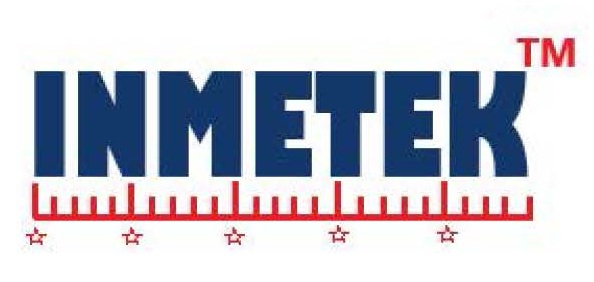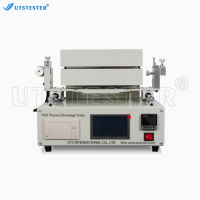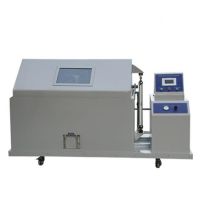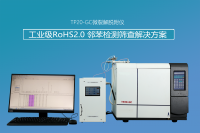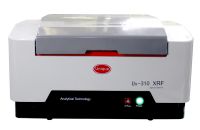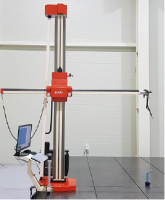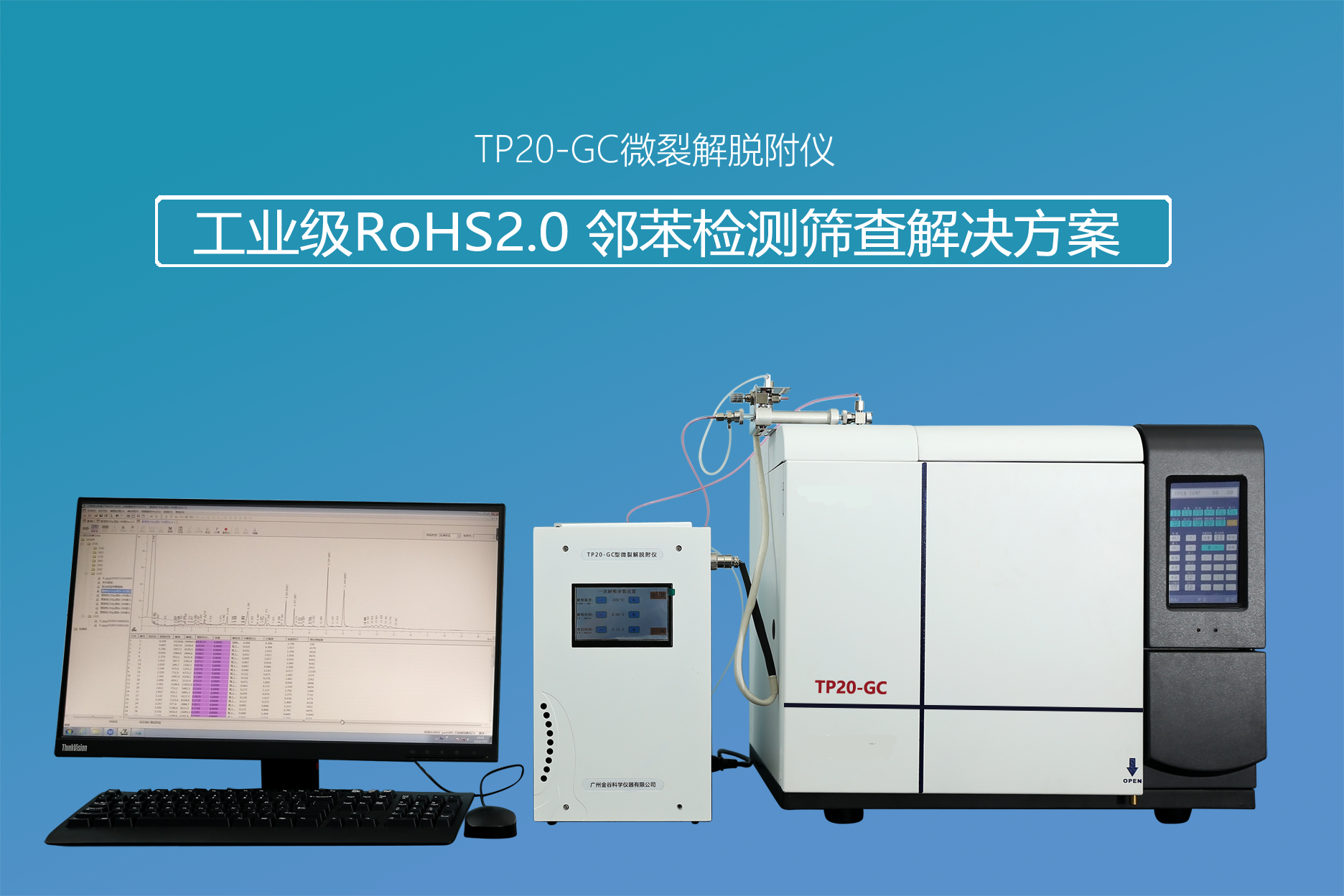No pre-processing, no reagents, results in 20 minutes
1. Short sample preparation time: 20 minutes/sample preparation time fully meets the needs of enterprise users for rapid screening;
3. Low purchase cost: PY+GCMS purchase cost 1.5 million, TP20-GC purchase cost less than 400,000;
4. Use cost Low: No need for pre-treatment, no reagents and consumables, the cost is less than 3,000 yuan a year;
5. Direct sample injection, simple operation : direct solid sample injection, five-step operation results, no basic personnel can also operate;
6. Applicable to 99.5 % Polymer material: chemical method is only suitable for 70% materials, TP20 is suitable for 99.5% materials
7. No professional laboratory environment is required : it can be installed and used only in an operating space with ordinary air-conditioning power supply.
TP20-GC thermal cracking desorption instrument
Responding to RoHS2.0, 4 new phthalate screening solutions
On June 4, 2015, the Official Journal of the European Union (OJ) issued the RoHS2.0 Amendment Directive (EU) 2015/863, which included the original RoHS 6 substances (lead, cadmium, mercury, hexavalent chromium, polybrominated biphenyls and polybrominated diphenyl ethers) On the basis of this, 4 phthalates were added to the RoHS2.0 restricted substance list. So far, RoHS2.0 has 10 controlled substances.

According to RoHS2.0 testing standards, manufacturers need to purchase relevant equipment for rapid raw material screening, material self-inspection, internal quality control, customer factory audits, etc. (instruments required for conventional configuration: GCMS+EDXRF spectrometer), but purchase these equipment With millions of dollars at every turn, many companies feel tremendous pressure, and companies have to do raw material screening. If they do not do screening, product production will bury huge hidden dangers, and companies cannot control whether their products meet standards. Based on the importance of internal screening and the huge investment required to purchase equipment, Jingu Keyi has developed a set of new solutions specifically for the rapid screening needs of the four phthalates in Rohs2.0: TP30-GC Micro-lysis desorption o-benzene rapid screening solution
This TP2-GC system can detect 20 kinds of o-benzenes and meet the needs of o-benzene detection. In addition to o-benzene, this system can also be used as red phosphorus flame retardants, organic solvent residues, polymer materials, and volatilization in materials. Sexual organics, etc., powerful!
Part 1: Introduction of TP30-GC ROHS2.0 Ortho-Benzene Solution
Part 2: Comparative analysis of three current RoHS2.0 solutions
The third part, instrument accuracy and reliability test:
Experimental part: instruments and consumables
1. Gas chromatograph with dual EPC control;
2. TP30-GC thermal pyrolysis desorption instrument (pyrolysis and desorption temperature 200℃-650℃);
3. Chromatography workstation (with anti-control function);
4. Special capillary column for o-benzene;
5. Air source of nitrogen and hydrogen;
6. One ten thousandth balance;
Pre-treatment process:
This method does not require pre-treatment. The consumables are 2.5cm long quartz tube, quartz wool, and pretreatment column. Place the solid sample in the middle of the quartz tube, fix both ends with quartz wool, and then put the prepared sample tube into the heating chamber That's it.
Analysis conditions
Micro-cracking program heating 200℃-450℃
Micro-pyrolysis time 2 min
Sampling method: split injection
Liquid injection volume: 1 ul
Solid injection volume: 5mg or less
Inlet temperature: 250 ℃
FID detector temperature: 300 ℃
Program the temperature to 50 ℃ (hold for 1 min), and increase to 400 ℃ at 20 ℃ per minute (hold for 10 min)
Name and retention time of each component
|
name |
abbreviation |
keep time |
Time window |
Remarks |
|
Diisobutyl phthalate |
DIBP |
8.524 |
0.05 |
|
|
Dibutyl phthalate |
DBP |
9.041 |
0.05 |
|
|
Butyl benzyl phthalate |
BBP |
10.941 |
0.05 |
|
|
Dioctyl phthalate |
DEHP |
11.949 |
0.05 |
|
Results and discussion:

Standard curve and linear range (detection limit)
Configure the DIBP standard solutions with concentrations of 50ppm, 100ppm, 250ppm, 500ppm and 1000ppm, and draw the standard curve with the concentration as the abscissa and the quantitative component peak area as the ordinate. The standard curve and linear correlation coefficient are shown below.

The following table is a comparison chart of peak height and peak area of 5 different concentration standards:
|
Concentration (ppm) |
Peak height (pA) |
Peak area (A) |
|
50 |
2,038.7 |
8,472.5 |
|
100 |
2,289.6 |
12607.7 |
|
250 |
5720.6 |
24674.0 |
|
500 |
1,2090.8 |
53037.4 |
|
1000 |
24747.2 |
120759.3 |
Repeatability (precision test)
The repeatability measurement was performed at the lowest detection limit concentration, and the results are shown below.
|
RSD% |
||
|
DIBP |
Peak height |
Peak area |
|
1 |
944.8 |
3,484.2 |
|
2 |
1007.3 |
3638.8 |
|
3 |
903.2 |
3167.9 |
|
4 |
1205.6 |
4,227.6 |
|
RSD%= 5.24 |
||
